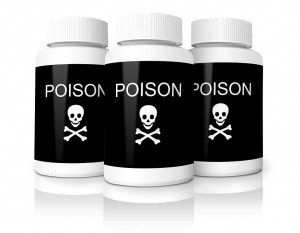When It Comes to TRI, We Want TMI
Here’s An EPA Tool That Tracks Chemicals In Your Community
Now, here’s a tool you can use. The Toxics Release Inventory (TRI) is a resource to learn more about toxic chemical releases and pollution prevention activities reported by industrial and federal facilities in your area.
A “release” is when a chemical is emitted into the air or water, or placed in some type of land disposal.
Thanks to right-to-know legislation passed in 1986, each year U.S. facilities from different industry sectors report how much of each chemical is released to the environment and/or how they are managed.
In general, the program covers chemicals that can cause:
Cancer or other chronic human health effects
Significant adverse acute human health effects
Significant adverse environmental effects
The 2019 national analysis is now available online and it can be a valuable tool to search for chemicals in your community that can pose a threat to human health and the environment.
It’s a little bit cumbersome, so we spoke with environmental reporter Lisa Sorg with NC Policy Watch to get some tips on navigating it.


You can read her full tutorial on how to use the TRI analysis here.
This comprehensive database shows records from every facility that has to report to this inventory (almost 22,000 facilities) throughout the country, but it’s still not an exhaustive list of all the toxins that may be in your community.
Think of it as a good place to begin. For example, PFAS chemicals were not included in the 2019 report, but they will be part of next year’s inventory.
Lisa recommends starting at the Where You Live page, which is an interactive map. You can search by state, city, county, or zip code. You can choose total releases or you can specifically choose water releases.
On the next page, you’ll get a map, quick facts, and see how your state ranks compared to others. You can also see the top five facilities and the top five chemicals released.
On that same page you can click on the individual facilities to get contact information, find out what federal laws the facility is subject to (an example would be the Clean Water Act), and get more information about each chemical and the impacts it might have on you or the environment.
You can also search specifically for a chemical. At the top of your fact sheet page, you can select “Go To New Report” (in the upper right corner of the page). Once you get to the new page, you’ll see a drop-down menu called “Topics of Interest” and you can select a chemical. You’ll see many choices for chemicals, and once you pick one, you’ll get a report that shows you the source for these chemicals and their health impact.
*It’s important to note that the data is a starting point, you still may need to follow-up with your local environmental agency or the facilities themselves to get more information.
Putting the Data to Use
One tip you can try is to sync up with chemicals that are listed in your water report to see if any of them are also connected to facilities in your community.
The data is also something you can bring to a city council meeting or any meeting with officials in your area to report back what’s on the TRI.
As Lisa explained to us, “Let’s say some polluting industry wants to come to your town. Through this site, you can see all the pollution sources that already exist in your area and go to the board of adjustment or planning or commerce and say, ‘Have you seen how this community is already burdened. Do we really want this in our community?’ I’m not saying you will win, but you’ll have data on your side.”
It can be a way to push local governments to take a look at what’s going on in the community. If there’s a big polluter releasing large amounts of one type of chemical, you can ask your local environmental agency to reduce the amount they are allowed to discharge in their next permit period.
The TRI can also be useful for communities with high rates of cancer to start connecting the dots with carcinogenic compounds being released in your town. If you are looking to request a cancer cluster investigation with your local board of health, you can also bring this information to their attention.
The report shows that between 2018 and 2019, total releases of TRI chemicals decreased by 9 percent, but facilities still discharged 3.4 billion pounds of toxic chemicals into our air, water and soil. It’s a tough pill to swallow and I’m grateful we have access to this reporting so we can continue efforts to clean up communities.
Building Community
Let me know in the comments below if you use this tool and what you find useful. And please post any tips you have that might be useful for others!
Knowledge is power and in this case, TMI is exactly what we want.




the damages being o=done int he area is a tiny fraction of what is actually going on in 60410